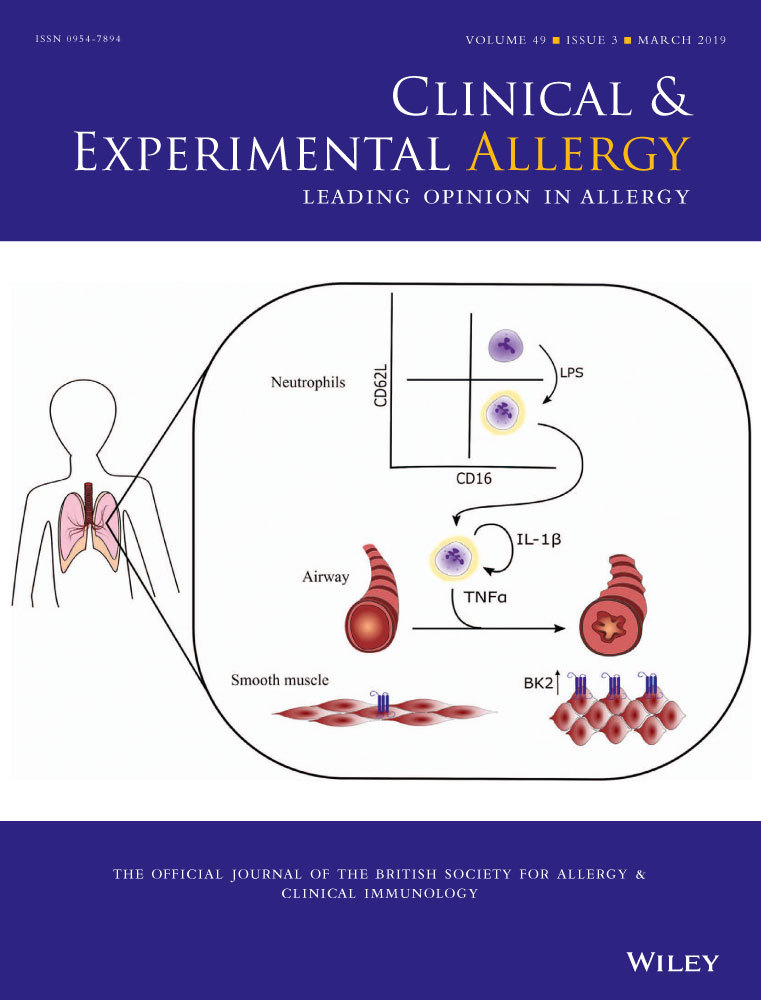The Basophil Activation Test reduces the need for a food challenge test in children suspected of IgE-mediated cow's milk allergy
Abstract
Background
The gold standard for the diagnosis of cow's milk allergy is the Double-Blind Placebo-Controlled Food Challenge (DBPCFC) test. However, disadvantages of the DBPCFC are the potential risk of anaphylactic reactions, the time-consuming procedure and high costs.
Objective
The aim of this study was to determine the reliability of the Basophil Activation Test (BAT) both for the initial diagnosis of cow's milk allergy in children and for the determination of tolerance in children with cow's milk allergy.
Methods
Ninety-seven BATs and cow's milk-specific IgE (sIgE) tests were performed in 86 infants/young children, suspected of (persistent) cow's milk allergy, who were qualified for an in-hospital DBPCFC. The BAT was performed with cow's milk extract and the purified major allergens casein, α-lactalbumin, β-lactoglubulin. Basophil activation was determined by CD63 upregulation measured by flow cytometry. The BAT results were compared to the DBPCFC outcomes.
Results
Based on unequivocal DBPCFC and BAT result combinations (80%), the BAT had a sensitivity and specificity of 100% (CI: 86%-100% and 68%-100%, respectively) in IgE-sensitized children (41% of the tested children). All non-IgE-sensitized children (59%) had a negative DBPCFC and BAT, except for five patients. These latter showed delayed and relatively mild symptoms in the DBPCFC with a negative BAT, supporting a non-IgE-mediated allergy in these children.
Conclusions and Clinical Relevance
The BAT seems reliable and cost-effective to diagnose patients with an IgE-mediated cow's milk allergy. In IgE-sensitized patients, a BAT might replace a DBPCFC. For non-IgE-sensitized patients presenting with mild symptoms, we propose to consider a (double-blind) extended (time) challenge test at home.
CONFLICT OF INTEREST
The authors declare no conflict of interest.




